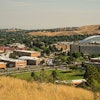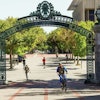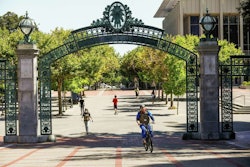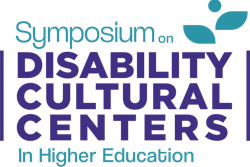When it comes to learning disabilities, minority students are often misdiagnosed.
The faces on a Bowie State University (BSU) Web site are well known: Abraham Lincoln, Stevie Wonder, Albert Einstein, Magic Johnson and Harriet Tubman. But BSU’s Office of Disability Support Services has added the largely unknown information that they all had a disability: Lincoln was depressed; Wonder is blind; Einstein was considered retarded as a child; Johnson has attention deficit disorder; and Tubman developed epilepsy.
“It’s the most successful group of ‘disabled’ people you could ever imagine,” says BSU’s coordinator of disability support services, Mike Hughes. “I deliberately put them there because the most important part of my job is creating an atmosphere of acceptance.”
According to the Advocacy Institute, a nonprofit that works to develop products, projects and services that improve the lives of people with disabilities at the college level, approximately 7 to 8 percent of all students have some sort of disability, with specific learning disabilities (LDs) such as ADHD, dyslexia or dysgraphia, making up slightly more than half — 50.5 percent — of those conditions.
“The people who have the hardest time being accepted, or sometimes accepting themselves, are people with learning disabilities,” Hughes says.
Experts say that often minority children go undiagnosed as their parents fear their children will be stigmatized.
“On both HBCU and White campuses, many Black and Latino students with learning disabilities never get any help,” says Thomas Mays, manager of disability services for Prince George’s Community College in Maryland. “Many are never diagnosed, and many of those who were identified as having LDs in grammar or high school had such a terrible time in special education that they never want to be identified in college even though they could really benefit from our services.”
According to Dr. Wanda J. Blanchett, associate dean for teacher education and outreach in the School of Education and Human Development at the University of Colorado at Denver: “Black students are … 2.41 times more likely than White students to be identified as having mental retardation; 1.13 times more likely to be labeled as learning disabled; and 1.68 times as likely to be found to have an emotional or behavioral disorder.” Blanchett feels that these diagnoses are primarily a result of racism.
Nancy Tidewell agrees. She is the president and founder of the National Association for the Education of African American Children with Learning Disabilities (NAEAACLD), which published One Child at a Time: A Parent Handbook and Resource Directory for African American Families With Children Who Learn Differently.
“I don’t believe that African-American students are any more likely to have learning disabilities than any one else,” Tidewell says. “According to the research from the Harvard Project on Civil Rights, racist attitudes result in a disproportionate number of Black students being placed into special education classes, which often lump together students who are ‘retarded or brain damaged’ with those who are emotionally disturbed or have learning disabilities.”
Are Black students disproportionately identified as needing special education as a result of racism in labeling and identification? Or is this a consequence of real problems resulting from poverty and environmental factors? The National Academy of Sciences concludes it’s the latter in its report, “Minority Representation in Special and Gifted Education.”
“There is a general consensus that a disproportionate number of African-American children are likely to suffer from learning disabilities because of the higher number being born with low-birth weights, to mothers with drug or alcohol problems, or [exposure] to lead and other toxins,” states the report.
In fact, there are an increasing number of researchers who say the real problem is that too many Black children with learning disabilities such as dyslexia and ADHD are actually underdiagnosed and undertreated.
In a 2006 article in the Journal of the National Medical Association, Dr. Heather Hervey-Jumper and Dr. Karl Douyon, et al, state that ADHD increases the risk for incarceration and drug abuse in all communities. In a January 2008 article published in the Journal of Attention Disorders, the same authors argue that fear of being stigmatized results in Black and Hispanic parents underreporting learning disabilities in their children, even when they perceive them to be struggling in school.
Accurately Diagnosing Students
Dr. Billy Hawkins, president of historically Black Talladega College in Alabama, has a unique perspective on the controversy surrounding the over- or misdiagnosis of learning disabilities among minority children.
“As a child from a poor, uneducated family in the rural South, I often struggled with school,” says Hawkins, who went on to earn a doctorate from Michigan State University. “I was mislabeled as having learning disabilities, which at that time meant being tracked into segregated special education classes and away from going to college.”
Hawkins says there’s always a reason why a particular student is failing, and that schools have a responsibility to assess the quality of their teaching and the student’s motivation before concluding that a person has a learning disability. At the same time, he says the diagnostic tools and interventions are much better than they were years ago.
“Because many HBCUs have an open-admissions policy, we attract a lot of students with academic difficulties, and our mandatory placement exams are often the first time these learning problems are identified,” Hawkins says.
In theory, HBCUs should be the perfect place to remedy this situation since minorities would be less likely to experience racial bias there, and HBCUs have a long tradition of opening their doors to students with academic difficulties. The Americans with Disabilities Act (ADA) already requires every college and university to provide “reasonable accommodations” to all students with disabilities.
“Unfortunately, a school can technically be in compliance with the ADA standards and still deliver only a very minimal level of services,” says Dr. Ralph Gardner, associate professor in the College of Education and Human Ecology at The Ohio State University. Gardner was one of several academics who served on the review committee for the publication, One Child at a Time.
“There are a disproportionate number of African-American students with learning disabilities who need good services at the college level if they are going to be successful,” he says. “Many HBCUs seem to believe that just being nurturing will cover it, but many students need explicit instruction and additional resources. My godson who has a learning disability was attending an HBCU in Ohio. When he was accepted, they assured his parents that they could provide the services he needs. However, they just weren’t well-organized, and he was nearly failing out when we encouraged him to transfer to another college where he’s getting much better support.”
One aspect of Gardner’s personal experience reflects a larger problem.
“I have never seen or heard of any list or directory that describes the services available for LD students at HBCUs,” Gardner says.
Neither Talladega’s Hawkins nor anyone else interviewed for this article was able to identify a source where a student, parent or guidance counselor could get a comprehensive listing that would help him or her understand or compare the LD services available at HBCUs. For example, both the NAEAACLDs’ guide and the Schwab Learning Web site have recommendations for good colleges for students with learning disabilities, however, neither mentions any HBCUs.
There are even serious problems with getting this information from two sources used by guidance counselors: Peterson’s Colleges for Students with Learning Disabilities or ADD, (7th and 8th edition out of print.), and The K&W Guide to Colleges for Students with Learning Disabilities or Attention Deficit/Hyperactivity Disorder, (9th edition) published by The Princeton Review.
Both of these phonebook-sized directories, which are based on surveys mailed to every college and university in the United States, list hundreds of schools and identify those that provide LD students with “structured programs,” “coordinated services” or just the basics required by the ADA. Unfortunately, neither guide identifies which of the colleges surveyed are HBCUs, and if someone at a school missed the survey or simply didn’t respond, that particular college would not be included in the directory.
“In 2003, the Maryland Association of Higher Education gave BSU an award of excellence for the quality of our computer laboratory for students with disabilities,” says Hughes. “But we are not mentioned in either of those two directories, and I never saw any surveys.”
Checking these two guides against the U.S. Department of Education’s list of 103 twoand four-year public and private HBCUs produced only about a dozen matches, and the guides did not always agree. The only HBCU identified as having a “structured program” for LD students was Florida A&M University. Those having “coordinated services” included Hampton University (Va.), Lincoln University (Mo.) and the University of Maryland Eastern Shore. Schools with “services” included Alabama State University, Central State University (Ohio), Langston University (Okla.), Lemoyne-Owen College (Tenn.) and Tennessee State University.
North Carolina had the largest number of HBCUs that provide services for LD students: Bennett College, Elizabeth City State University, Fayetteville State University, Johnson C. Smith University and North Carolina A&T State University. Bishop State Community College in Alabama was the only two-year HBCU listed that offers these services.
Exemplary Programs
What would be considered comprehensive services for a student with learning disabilities? The University of Arizona’s Strategic Alternative Learning Techniques (SALT) Center is described in both guides and is widely respected as one of the very best. It has a separate admissions process for LD/ADHD students and provides intensive services for the first year while setting up students to achieve educational independence as they progress. According to the Princeton Review Guide, in addition to the common accommodations (such as extra time on tests), trained LD specialists provide “academic monitoring, registration assistance … a writing enhancement program, and personalized tutorial services.” The number of courses and GPAs needed to graduate is the same for LD students, but they may be allowed to substitute other courses for math or foreign language requirements if they are not math, science or language majors.
FAMU’s Learning Development Evaluation Center offers the most comprehensive services of any HBCU. It currently admits 20-25 students each year and serves 275 LD students, some of whom come through the general admissions process. Students apply to the program separately and participate in a twoweek summer transition program.
Donna Shell, the program’s acting coordinator, says the program is different because, “We make them do a presentation of their disability and how it impacts their specific learning style. Many LD students come out of high school with a long list of test results, but can only say ‘ask my mother’ if you inquire how their difficulties actually impact their ability to handle the materials.”
Shell does not mince her words when referring to the lack of these types of programs at other HBCUs. “In a college setting, LD kids are on the bottom of the totem pole, and many HBCUs really do just the bare minimum to help them. One reason is that they see their mission as reaching out to the poor kid from the ghetto or from a rural community. Many already suffer from the perception that their students are below average, so they don’t want to reinforce an image that HBCUs already exist primarily to service students who can’t be admitted anywhere else.”
Dr. Gwendolyn Cartledge, a professor of special education at Ohio State, notes that these services can put financial burdens on both students and colleges. Special education services are very expensive and could involve hiring a person to actually help students take notes or providing a translator for someone who is deaf. In order for a student to qualify for accommodations, they have to come in with a diagnosis or be tested in college. “Many colleges won’t pay for that,” she says, “and many colleges don’t provide specific tutoring.”
Dr. Stanley Trent, director of the Center for Minority Research in Special Education at the University of Virginia, acknowledges that there is a disproportionate number of Black students with learning disabilities, and that very few HBCUs offer enough services specifically targeted for these individuals. Nevertheless, he’s optimistic.
“First, you have to provide access to the information, which technology is making easier and easier,” Trent says. “It almost doesn’t matter if the reason a student can’t read is because he or she is dyslexic, or blind, or went to a terrible high school. Anyone can benefit from having the books on tape. Then you must provide direct instruction in study strategies and how to organize and manage their time. Finally, nothing works without effective engagement, giving the students an emotional tie between the culture they grew up in and what they’re learning in school.”
Click here to post and read comments
© Copyright 2005 by DiverseEducation.com















